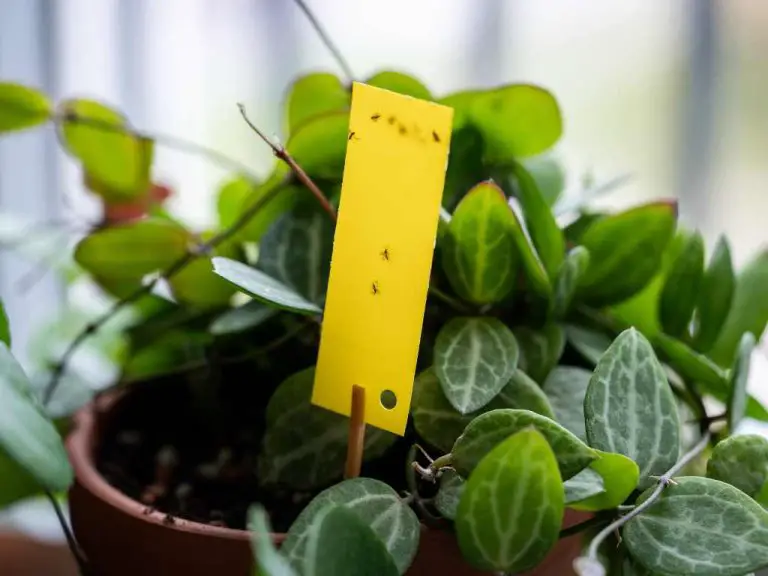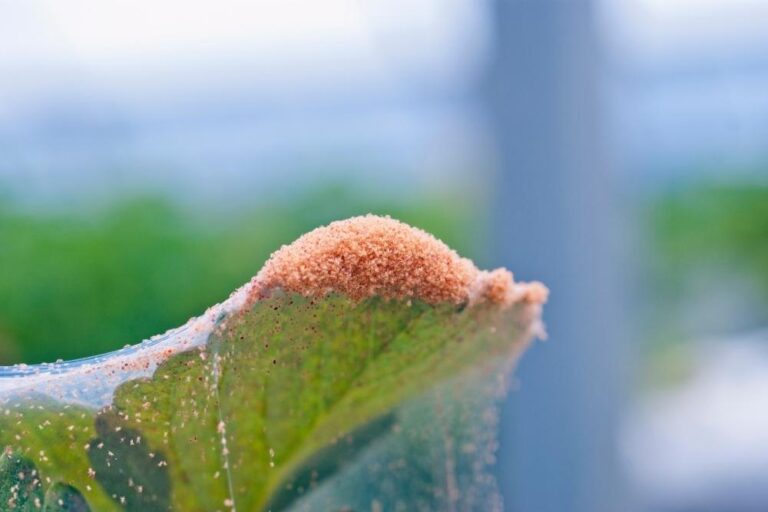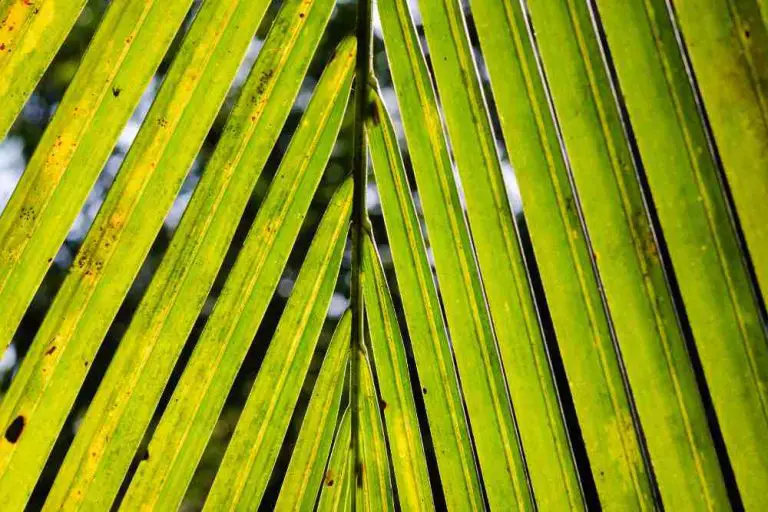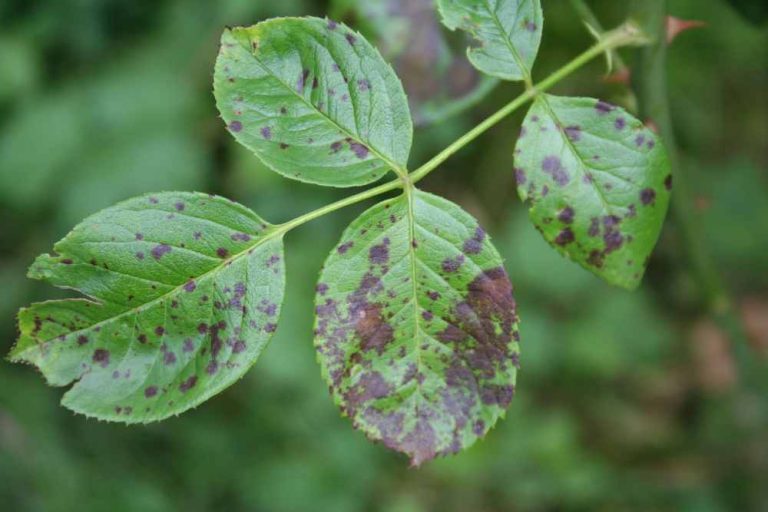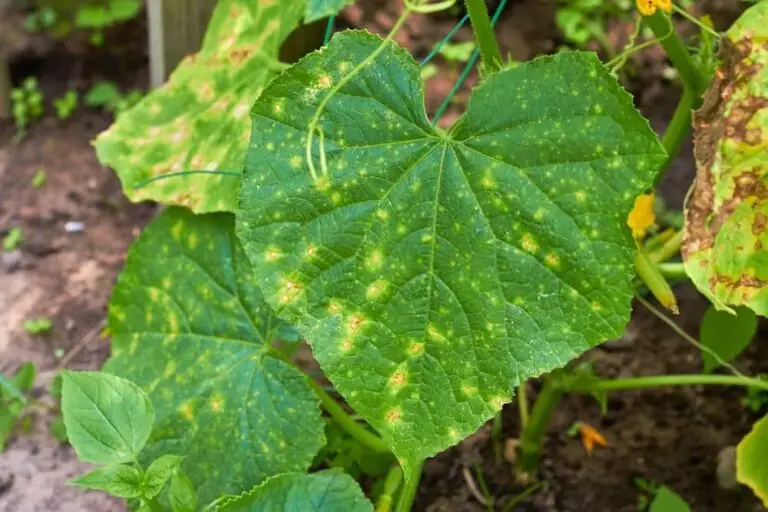Pest and Disease of Carrot, Cabbage, Lettuce, and Potato
Pest of Carrot
- Carrot Rust Fly ( Psila rosae )
- Carrot Weevil ( Listronotus oregonensis )
- Flea Beetle (Systena blanda)
- Aphids (Willow-carrot aphid) (Cavariella aegopodii )
Disease of Carrot
- Alternaria Leaf Blight Fungus (Alternaria dauci )
- Bacterial Leaf Blight (Xanthomonas campestris )
- Black Rot (Alternaria radicina )
- Cavity Spot (Pythium spp.)
Pest of Carrot
1. Carrot Rust Fly ( Psila rosae )
Surface scarring of taproot caused by tunnels. Tunnels are filled with rust-colored mush. The adult insect is a small, dark-colored fly. Larvae are white maggots approximately 1 cm (0.3 in) long. The use of row covers will help to protect plants from damage but they must be installed before adult flies lays eggs on plants. Harvest carrots in blocks. Do not leave any carrots in the ground over winter to reduce overwintering sites.
2. Carrot Weevil ( Listronotus oregonensis )
Irregular dark grooves in a zig-zag pattern on roots. The leaves of plants may be yellow. The adult insect is a dark-colored beetle. Larvae are white to pinkish-white C-shaped grubs with yellow-brown heads. Remove all debris from Umbelliferous crops (e.g. parsley, dill, celery, etc.) to reduce sites where weevils can survive and persist. Try to rotate Umbelliferous crops to different areas of the home garden each year to reduce the survival of larvae in the soil.
3. Flea Beetle (Systena blanda)
Small holes in leaves. Young plants and seedlings are particularly susceptible. Plant growth may be reduced. If the damage is severe the plant may be killed. The beetles are often shiny. Use floating row covers may before the emergence of the beetles to provide a physical barrier to protect young plants. Plant seeds early to allow establishment before the beetles become a problem. Trap crops may provide a measure of control – cruciferous plants are best. Apply a thick layer of mulch. Apply on diamotecoeus earth or oils such as neem oil. Apply insecticides containing carbaryl, spinosad, bifenthrin, and permethrin.
4. Aphids (Willow-carrot aphid) (Cavariella aegopodii )
Small soft-bodied insects on the underside of leaves and/or stems of the plant. Green or yellow color symptoms can be seen. If the infestation is heavy it may cause leaves to yellow and/or distorted, necrotic spots on leaves, and/or stunted shoots. Secrete a sticky (honeydew) which encourages the growth of sooty mold on the plants. If the population is limited to just a few leaves or shoots then the infestation can be pruned out to provide control.
Check transplants for aphids before planting. Use tolerant varieties if available. Reflective mulches such as silver-colored plastic can deter aphids from feeding on plants. Spray a strong jet of water to knock aphids from leaves. Insecticides are used if necessary. Insecticidal soaps or oils such as neem or canola oil are usually the best methods of control.
Diseases of Carrot
1. Alternaria Leaf Blight Fungus (Alternaria dauci )
Green-brown water-soaked lesions on leaves. Lesions may coalesce causing leaves to yellow and die. Lesions may present on petioles. Difficult to control in wet conditions. Apply appropriate fungicides when the first symptoms appear. Treat seeds with fungicide or hot water before planting. Apply gibberellin acid to carrot foliage to promote upright growth and promote air circulation through the canopy.
2. Bacterial Leaf Blight (Xanthomonas campestris )
Small, angular, yellow spots on leaves brown, water-soaked lesions with a yellow halo. Centers of lesions dry out, and become brittle leaves may become curled or distorted. Flower stalks may develop elongated lesions that exude bacterial ooze. Infected umbels may be blighted. Plant pathogen-free seed. Avoid using sprinkler irrigation. Apply appropriate bactericides if available.
3. Black Rot (Alternaria radicina )
Damping-off of seedlings. Root and crown necrosis. Blighted foliage. The lower portion of the petioles is black and the necrotic black ring around the petiole attachment is black sunken lesions on the taproot. Black rot is difficult to control and can survive in the soil for long periods. Practice long crop rotations. Plow crop residue into the soil immediately after harvest. Plant-resistant varieties. Plant the only pathogen-free seed. Treat seeds with hot water before planting.
4. Cavity Spot (Pythium spp.)
Sunken, elliptical, gray lesions across the root. The outer layer of the root ruptures and develops dark, elongated lesions. Small vertical cracks may form on the cavities. Some cultural practices can control the disease. Avoid planting in fields/areas known to previously had carrot spot; do not over-fertilize plants. Application(s) of appropriate fungicide can provide adequate control.
Pests and Diseases of Cabbage
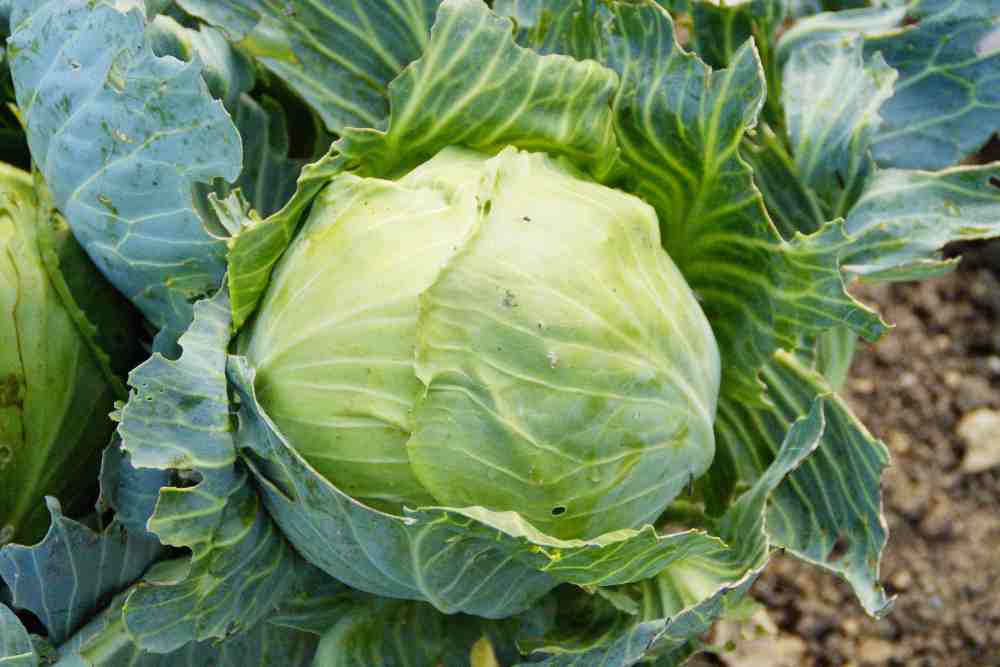
Pests of Cabbage
- Beet armyworm Insect (Spodoptera exigua)
- Cabbage Aphid (Brevicoryne brassica)
- Flea Beetle (Phyllotreta sp.)
- Thrips (Frankliniella occidentalis)
Diseases of Cabbage
- Anthracnose (Colletotrichum higginsianum)
- Bacterial Soft Rot (Erwinia carotovora)
- Damping-Off (Rhizoctonia solani)
- Powdery Mildew (Erysiphe cruciferarum)
Pest of Cabbage
1. Beet Armyworm (Spodoptera exigua )
Singular or closely grouped circular to irregularly shaped holes in foliage. Heavy feeding by larvae leads to skeletonized leaves; shallow, dry wounds on fruit. Egg clusters of eggs may be present on the leaves. Organic methods of controlling the beet armyworm include biological control by natural enemies that parasitize the larvae and the application of Bacillus thuringiensis. Use of chemicals available for commercial control but many that are available for the home garden do not provide adequate control of the larvae.
2. Cabbage Aphid (Brevicoryne brassicaea )
Stunted growth or even plant death in severe conditions. Small, grey-green in color, and soft-bodied, and are covered with a white waxy coating. Prefer to feed deep down in cabbage head and may be obscured by the leaves.
Use tolerant varieties. Reflective mulches such as silver-colored plastic can deter aphids from feeding on plants. Sturdy plants can be sprayed with a strong jet of water to knock aphids from leaves. Insecticides are generally only required to treat aphids. Insecticidal soaps or oils such as neem or canola oil.
4. Flea Beetle (Phyllotreta sp.)
Small holes or pits in leaves, give the foliage a characteristic “shothole” appearance. Reduce plant growth. If the damage is severe the plant may be killed. The pest responsible for the damage is a small (1.5–3.0 mm) dark-colored beetle that jumps when disturbed, and is shiny. Use floating row covers before the emergence of the beetles. Plant seeds early to allow establishment before the beetles become a problem. Trap crops may provide a measure of control – cruciferous plants. Apply a thick layer of mulch. Apply insecticides containing carbaryl, spinosad, bifenthrin, and permethrin.
5. Thrips (Frankliniella occidentalis)
Leaves may be distorted. Leaves are covered in coarse stippling and may appear silvery. Leaves speckled with black feces. Avoid planting next to onions, garlic, or cereals where very large numbers of thrips can build up. Use reflective mulches early in the growing season to deter thrips. Apply appropriate insecticide if thrips become problematic.
Diseases of Cabbage
1. Anthracnose (Colletotrichum higginsianum)
Small circular or irregularly shaped dry spots which are gray to straw in color on leaves. A high number of spots may cause the leaf to die. Lesions may split or crack in dry centers. Treat seeds with hot water before planting. Crop rotation. Plant in an area with good soil drainage.
2. Bacterial Soft Rot (Erwinia caratovora)
Water-soaked lesions on the cabbage head expand to form a large rotted mass of cream-colored tissue which is liquid underneath. The surface of lesions usually cracks and exudes slimy liquid which turns dark brown or black on exposure to air. Chemical treatments are not available for bacterial soft rot. Crop rotation. Avoid damaging heads during harvest.
3. Damping-Off (Rhizoctonia solani)
Death of seedlings after germination. Brown or black rot girdling stem. The seedling may remain upright but the stem is constricted and twisted in older cabbage plants sharply defined brown lesions appear on the underside of leaves. The lesions expand causing leaves to wilt and drop from the plant. Plant pathogen-free seeds or transplants that have been produced in sterilized soil. Apply fungicide to the seed to kill off any fungi. Shallow plant seeds or delay planting until the soil warms.
4. Powdery Mildew (Erysiphe cruciferarum)
Small white patches on upper and lower leaf surfaces. Leaves become chlorotic and drop from the plant. Plant-resistant varieties. Crop rotation. Remove all crop debris after harvest. Remove weeds. Avoid excessive application of nitrogen fertilizer. Powdery mildew can be controlled by the application of sulfur sprays, dust, or vapors.
Pests and diseases of Lettuce
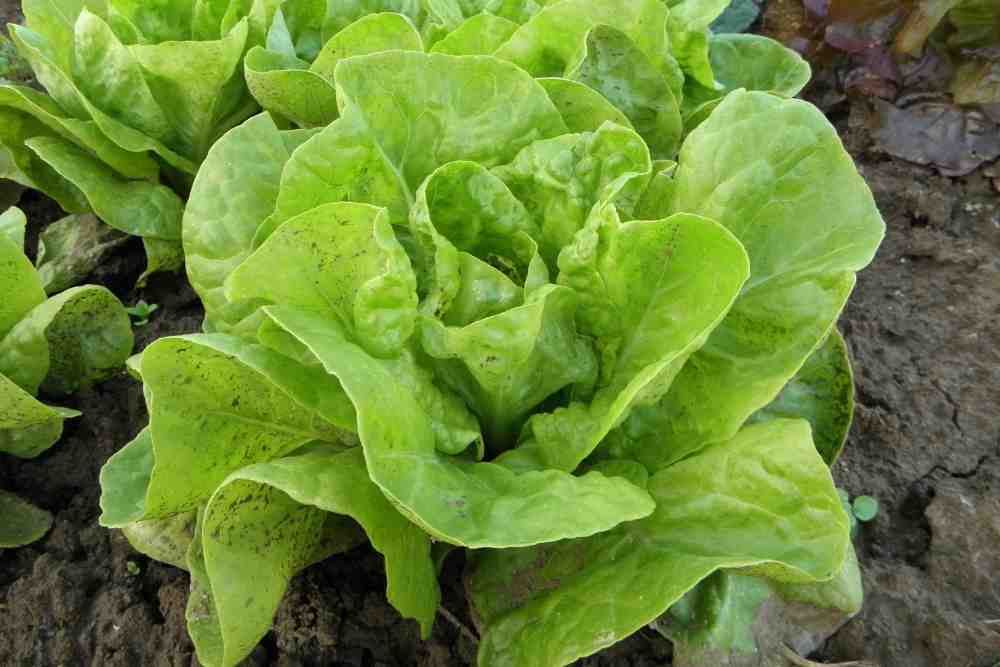
Pests of Lettuce
- Aphids
- Armyworm
- Grasshopper
- Loopers
- Tarnished Plant Bug
- Spotted Cucumber Beetle
Disease of Lettuce
- Anthracnose
- Bolting
- Damping Off
- Mosaic Virus
Pest of Lettuce
1. Aphids
Yellowing and distorted leaves. Stunted growth and an unsightly black sticky substance on the plant. Feed on a wide range of plants, and in severe cases, the plant fails to thrive. Secrete a sticky substance, called honeydew which quickly becomes infested with black sooty mold. Act as a vector. Physically remove the insects from plants. Spray water. Apply soap and water. Introduce predator insects into areas infested with aphids. Use neem extracts. Frequent crop rotation. Grow young plants under row covers.
2. Armyworm
Feed on the tender new growth of their host plants. Because of the speed at which they move, armyworm plant damage can be seriously devastating to gardens. Hand picks and removes. Circle stems with diatomaceous earth, a natural powder made from ground-up fossils that kill insects when they walk over it. Sprinkle used coffee grounds or eggshells around plants. Keep up with the cultivation. Apply an insecticide late in the evening for best control. Some readers use Bacillus thuringiensis.
3. Grasshopper
Lay eggs in the soil during fall, where they hatch the following spring. Once hatched, begin feeding on grasses and broadleaf plants. The damage can be observed on the leaves, flowers, and other immature parts of the plants. Making the garden a welcome mat to various bird species. Kill grasshoppers can be an effective alternative. Nosema locustae is a naturally occurring microbe that effectively kills grasshoppers by infecting them with the disease. A fungal microbe is Beauveria bassiana. This fungus grows naturally in soils and acts as a parasite to many types of insects.
4. Loopers
Attack lettuce. Dark green worms are quite thin. Can be seen in dark stripes. They are called “loopers” as they crawl by making a loop, much like an inchworm. Use pheromone traps. Cover plants with floating row cover to keep migrating moths from landing and laying eggs. Wasps are the looper larvae’s biggest enemy. Release Trichogramma wasps to destroy eggs. Use biological control, soil-dwelling bacterium Bacillus thuringiensis, or Bt-kurstaki. After harvest, bury spent cole crops to destroy cocoons before adults emerge in spring.
Diseases of Lettuce
1. Anthracnose
First, appear as small circular to angular water-soaked lesions on the lower leaves. Centers of lesions become necrotic and often fall out leading to a shot hall appearance. In severe conditions, leaf tissues turn brown may lose the entire crop. Rotate with any crop other than lettuce. Rotations will not eliminate the pathogen unless lettuce is not planted for over four years. Use irrigation systems (furrow or drip irrigation) that eliminate leaf wetting. Resistant cultivars are not widely available.
2. Bolting
Causes flowers and seeds to grow and the lettuce to taste slightly bitter. Bolting is caused by hot and sunny conditions. Sweet corn makes a good companion plant for lettuce as it will shade the plants during the hottest months. Starting lettuce indoors under lights and placing them outside while it is still nippy gives them a head start and may reduce the tendency to bolt. Use row covers. Using a shade cloth over the row to reduce the intensity of the light.
3. Damping-off
Damping-off is another soil-based fungus. As the fungus lives in the soil, the disease can start to take effect when seedlings are still in the ground. Water-filled spots and plant wilting as the lettuce start to mature. Damping-off occurs most frequently when conditions are wet and damp.Used as a soil drench on seedlings and newly sown seeds, Trichoderma harzianum can fight disease and promote healthy root systems. Avoid compacting soil and plant in well-drained soil. Alternating vegetables with cover crops. Recommend Root Guardian Biofungicide for Soilborne Diseases.
Pests and diseases of Tomato
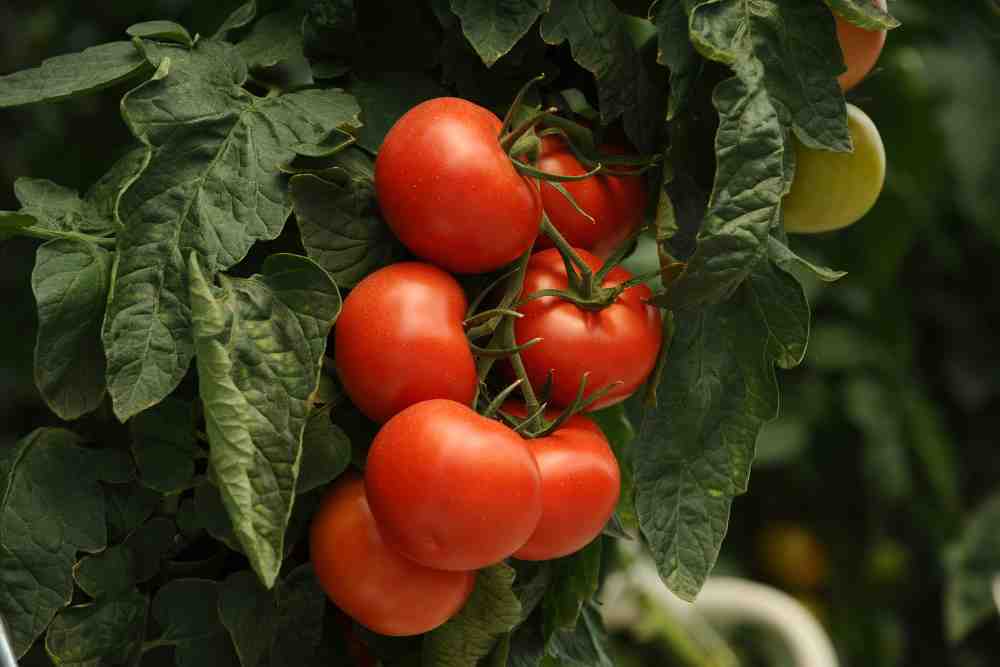
Pests of Tomato
- Cutworm
- Leaf Miner
- Tomato Fruit Worm
Disease of Tomato
- Target Spot
- Anthracnose
- Mosaic Virus
- Bacterial Wilt
Pests of Tomato
1. Cutworm
Caterpillars are feeding on weeds and other host plants move to young plants. Caterpillars cut off small plants at or near the soil surface. Usually appears as skips or sections of rows. Field sanitation by using chemicals.
2. Leaf Minor
Larvae make tunnel the tomato leaf-eating the chlorophyll-rich mesophyll cells. This leaves an irregular track of dead tissue that eventually causes the leaf to stop functioning. Stunted growth of plants. Reduced yield. Adult leaf miner flies are attracted to yellow cards coated with a sticky layer.
3. Tomato Fruit Worm
Caterpillars may emerge from one fruit and enter another. Their feeding results in a messy, watery, internal cavity, Filled with cast skins and feces. Damaged fruit will ripen prematurely. Late in the season, small larvae will also enter ripe fruit. Careful monitoring for eggs and small larvae. It is essential to treat before large numbers of larvae enter the fruit. Trichogramma parasites and other natural enemies often destroy significant numbers of eggs.
Disease of Tomato
1. Target Spot
Brown to black spots. First, appear on lower leaves, then it will spread eventually. Use disease-free seeds. Remove and destroy infected materials. Spray remaining foliage and fruit with Copper oxychloride.
2. Anthracnose
Affect ripe or ripening fruits. Soft sunken waterlogged spots. Common in fruit near the ground. Keep staked with fruit clear of the ground. Remove diseased fruit. Spray fruit with Cu(OH)2 when ripening begins. Use crop rotation.
3. Mosaic Virus
Light and dark green blotches on the leaves and sunken grown patches on the fruit skin. Lift and destroy affected plants. Avoid replanting in the same patch. Sterilize tools and wash hands. Plant diseases resistant varieties.
4. Bacterial Wilt
Young leaves wilt in hot weather, despite aquatic soil moisture. The plant remains green but rapidly wilts and dies. Cut the stem at the base of the plant and suspend it in water. Lift and destroy immediately.
Pests and Diseases of Potato

Pests of Potato
1. Colorado Potato Beetle – (Leptinotarsa decemlineata)
2. Cutworms – (Agrotis spp.)
3. Flea Beetle – (Epitrix spp.)
Diseases of Potato
1. Early Blight (Fungus) – (Alternaria solani)
2. Bacterial Ring Rot – (Clavibacter michiganensis)
3. Blackleg (Soft Rot) – (Erwinia carotovora)
4. Black Dot (fungus) – (Colletotrichum coccodes)
Pest of Potato
1. Early Blight (Fungus) – (Alternaria solani)
Dark lesions with a yellow border. Sunken tissue on the leaves and stem. Lesions initially circular bud becomes angular. Leaves become necrotic bud remain attached to the plant. Dark dry lesions on tubers. Application of appropriate fungicides. Fertilizing and watering adequately. Store tubers in a cool environment.
2. Bacterial Ring Rot – (Clavibacter michiganensis)
Wilting stems and leaves. Drying leaves. Low leaves wilting first. Remove crop debris from the soil after harvest. Sanitize tools and equipment regularly.
3. Blackleg (Soft Rot) – (Erwinia carotovora)
Small water-soaked lesions on the base of stems. Lesions may enlarge to form a large extended lesion stretching from the base of the stem to the canopy. The tissue becomes soft and water-soaked can be light brown to inky black in colored. Curled leaves which have a soft and slimy texture when wet. Sanitize tools and equipment when cutting seeds. Avoid damaging tubers during harvest. Reduce periods of leaf wetness.
4. Black Dot (fungus) – (Colletotrichum coccodes)
Small black dots on tubers stolon and stems. Roots may rot below ground. Leaves may turn yellow and wilt. The infection causes defoliation. Rotate crops away from potatoes. Do not plant infested tubers or seed pieces. Fertilizer and water plants adequately. Apply protective fungicides.
5. Common Scab – (Streptomyces spp.)
Raised brown lesions on tubers with corky texture. Deep pitted brown or black lesions on the tuber with straw-colored translucent tissue underneath. Avoiding planting infected tubers using a 3-4 rotation away from potato. Planting less susceptible potato varieties. Maintaining high soil moisture content for 4-6 weeks.
Diseases of Potato
1. Colorado Potato Beetle – (Leptinotarsa decemlineata)
Feeding damage to foliage. If infestation is severe plants can be completely defoliated. Adults & larvae should be handpicked from plants. Apply of Bacillus thuringiensis. Use some insecticides.
2. Cutworms – (Agrotis spp.)
Stems of young transplants or seedlings may be severed at the soil line. If infection occurs later irregular holes are eaten into the surface of fruits. Remove all plant residue from the soil after harvest. Plastic or foil collars fitted around plants stems to cover the bottom 3 inches above the soil line. Hand picks larvae. Apply appropriate insecticides.
3. Flea Beetle – (Epitrix spp.)
Small holes or pits in leaves that due to the foliage. Plant growth may be reduced. If the damage is severe the plant may be killed. Apply of a thick layer of mulch. Apply on diamotecoeus earth or oils. Apply of insecticides containing carbaryl.
- 18 Creative Ideas for Stunning Garden Borders - April 16, 2024
- 19 Creative and Cheap Backyard Ideas: Transform Your Backyard on a Budget - April 11, 2024
- 15 Ingenious Kitchen Garden Ideas to Cultivate Freshness Right at Home - April 7, 2024


